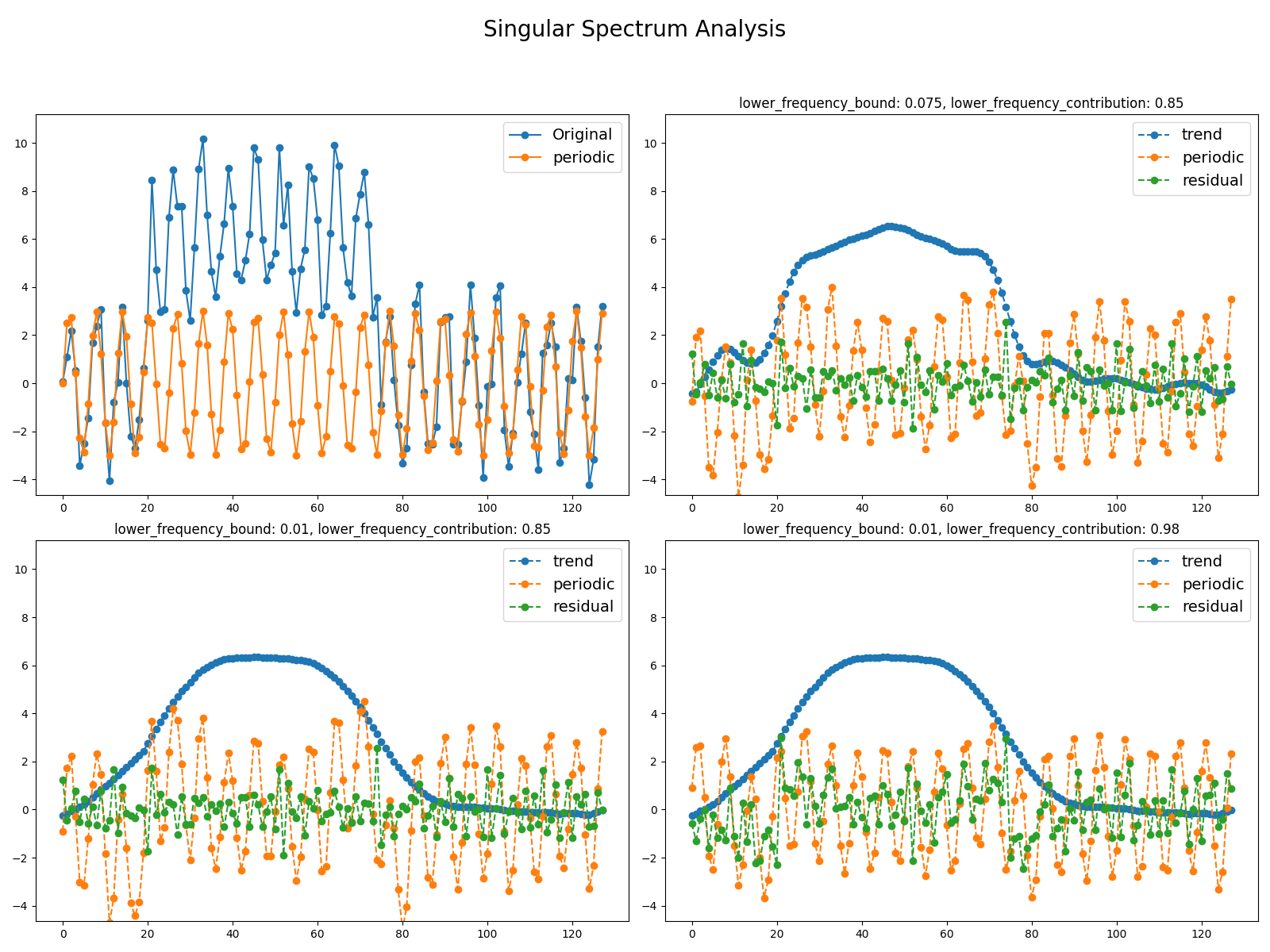Note
Click here to download the full example code
Trend-Seasonal decomposition with Singular Spectrum Analysis¶
Time series can be composed of three different subseries:
trend, seasonal and noise. Decomposing time series into these components
can be useful in order to characterize the underlying signal. One decomposition
algorithm is Singular Spectrum Analysis. This example illustrates the
decomposition of a time series into the three subseries using the automatic
grouping of the SSA-components and visualizes the results depending
on the selected parameters.
It is implemented as pyts.decomposition.SingularSpectrumAnalysis.

# Author: Lucas Plagwitz <lucas.plagwitz@uni-muenster.de>
# License: BSD-3-Clause
import numpy as np
import matplotlib.pyplot as plt
from pyts.decomposition import SingularSpectrumAnalysis
from pyts.datasets import make_cylinder_bell_funnel
# Parameters
n_samples, n_timestamps = 3, 128
X_cbf, y = make_cylinder_bell_funnel(n_samples=10, random_state=42,
shuffle=False)
X_period = 3 * np.sin(np.arange(n_timestamps))
X = X_cbf[:, :n_timestamps] + X_period
# We decompose the time series into three subseries
window_size = 20
# Singular Spectrum Analysis
ssa = SingularSpectrumAnalysis(window_size=window_size, groups="auto")
X_ssa = ssa.fit_transform(X)
# Show the results for different frequency-parameters
plt.figure(figsize=(16, 12))
ax1 = plt.subplot(221)
ax1.plot(X[0], 'o-', label='Original')
ax1.plot(X_period, 'o-', label='periodic')
ax1.legend(loc='best', fontsize=14)
ax1.set_ylim([np.min(X[0])*1.1, np.max(X[0])*1.1])
params = [(0.01, 0.85), (0.01, 0.98)]
for idx in range(3):
ax = plt.subplot(222 + idx)
labels = ["trend", "periodic", "residual"]
for i in range(3):
ax.plot(X_ssa[0, i], 'o--', label=labels[i])
ax.legend(loc='best', fontsize=14)
ax.set_ylim([np.min(X[0])*1.1, np.max(X[0])*1.1])
ax.set_title(f"lower_frequency_bound: {ssa.lower_frequency_bound}, "
f"lower_frequency_contribution: "
f"{ssa.lower_frequency_contribution}")
if idx > 1:
continue
ssa = SingularSpectrumAnalysis(window_size=window_size, groups="auto",
lower_frequency_bound=params[idx][0],
lower_frequency_contribution=params[idx][1])
X_ssa = ssa.fit_transform(X)
plt.suptitle('Singular Spectrum Analysis', fontsize=20)
plt.tight_layout()
plt.subplots_adjust(top=0.88)
plt.show()
Total running time of the script: ( 0 minutes 0.853 seconds)

